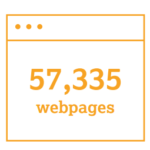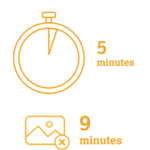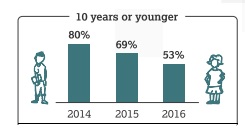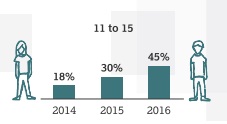Online Child Sexual Abuse Trends and Statistics from IWF Annual Report 2016
UK-based Internet Watch Foundation, the global experts at tackling child sexual abuse images on the internet and our partners for India’s first Internet hotline recently released their annual report for 2016. The report gives the latest data on child sexual abuse images and videos online reported from their 51 hotlines across 45 countries including India and through active searching by their analysts.
This document the world refers to in order to measure its successes and challenges in the global fight against online child sexual abuse material.
Here are some noteworthy statistics and trends from the report –

In 2016, IWF processed 105,420 reports and worked to remove 57,335 webpages containing child sexual abuse material. The 57,335 webpages were traced to 50 countries, which is an increase from 48 in 2015.
IWF assesses a webpage every five minutes. Every nine minutes that webpage shows a child sexual abuse material.
53% of the URLs assessed by IWF showed sexual abuse of children aged between 0-10 years. In 2013 and 2014, this figure was at around 80%.
45% of the URLs assessed by IWF showed sexual abuse of children aged between 11-15 years.
For past many years, child sexual abuse material (images and videos) were hosted in North America. But now, it has shifted to Europe. 60% of child sexual abuse content was hosted in Europe, an increase of 19% whereas 37% was hosted in North America, a decrease of 20%.
92% of all child sexual abuse URLs identified by IWF globally in 2016 were hosted in these five countries – Netherlands, United States, Canada, France and Russia.
20,972 URLs reported in 2016 were found to be hosted in Netherlands, an 18% increase from 2015. 12,492 URLs reported were found to be hosted in United States, a 15% decrease from 2015.
.com, .io, .cc, .net and .se domains account for 80% of all webpages containing child sexual abuse images and videos.
Image hosting sites and cyberlockers (third party online file-sharing and file storing services such as Dropbox, Google Drive etc) are the most abused sites for child sexual abuse materials whereas social networks were the least abused sites in 2016.
“Self-produced” content created using webcams and then shared online is becoming increasingly prominent.
“Hidden Services” are websites hosted within proxy networks, also known as the “dark web”. These websites are part of the Internet that do not feature on conventional search engines and are challenging to track as their hosting server cannot be traced in the normal way. They contain thousands of links to child sexual abuse imagery that’s hosted on image hosts and cyberlockers on the open web. In 2016, the number of newly identified hidden services declined from 79 in 2015 to 41.
Newsgroups – IWF is one of only a handful of hotlines in the world that monitors the content on newsgroups (online forums or internet discussion groups or ‘usenet’) and issues takedown notices for individual postings of child sexual abuse imagery. In 2016, 2,213 takedown notices were issued for newsgroups containing child sexual abuse images as compared to 408 in 2015. That’s an increase of 442%. 60, 466 posts were removed from public access as compared to 20,604 in 2015
Disguised websites are the ones which can be accessed by a “digital pathway” of links from other websites. When the path is not followed or the website is accessed directly through a browser, the website shows legal content. Disguised websites are more difficult to find and investigate for illegal imagery. In 2016, 1,572 websites using this method to hide child sexual abuse imagery were uncovered as compared to 743 disguised websites in 2015. That’s an increase of 112%.
In 2016, 42 websites were found to be accepting Bitcoins. Up from 4 in 2015.
“Image hosts” are most consistently abused for distributing child sexual abuse imagery. They are used by offenders to host the images which then appear on their dedicated websites. Image hosts act as sources and are embedded on other websites.
Keywords or ‘code language’ which pedophiles use for hiding and finding child sexual abuse online. IWF creates a list and shares it with their members consisting of terms or keywords people are using while looking for child sexual abuse images online
Commercial child sexual abuse material is the imagery which was apparently produced or is being used for the purpose of financial gain by the distributor. In 2016, 5,452 webpages out of 57,335 were commercial in nature as compared to 14,708 in 2015. That’s a decrease of 62%.
Web Brands are the websites which are dedicated to child sexual abuse material. These are commercial websites which constantly move their location so that they are tough to track. In 2016, there were 766 active brands selling child sexual abuse imagery as compared to 664 brands in 2015. There were 573 previously unknown brands in 2016, out of which 226 were disguised websites.


















